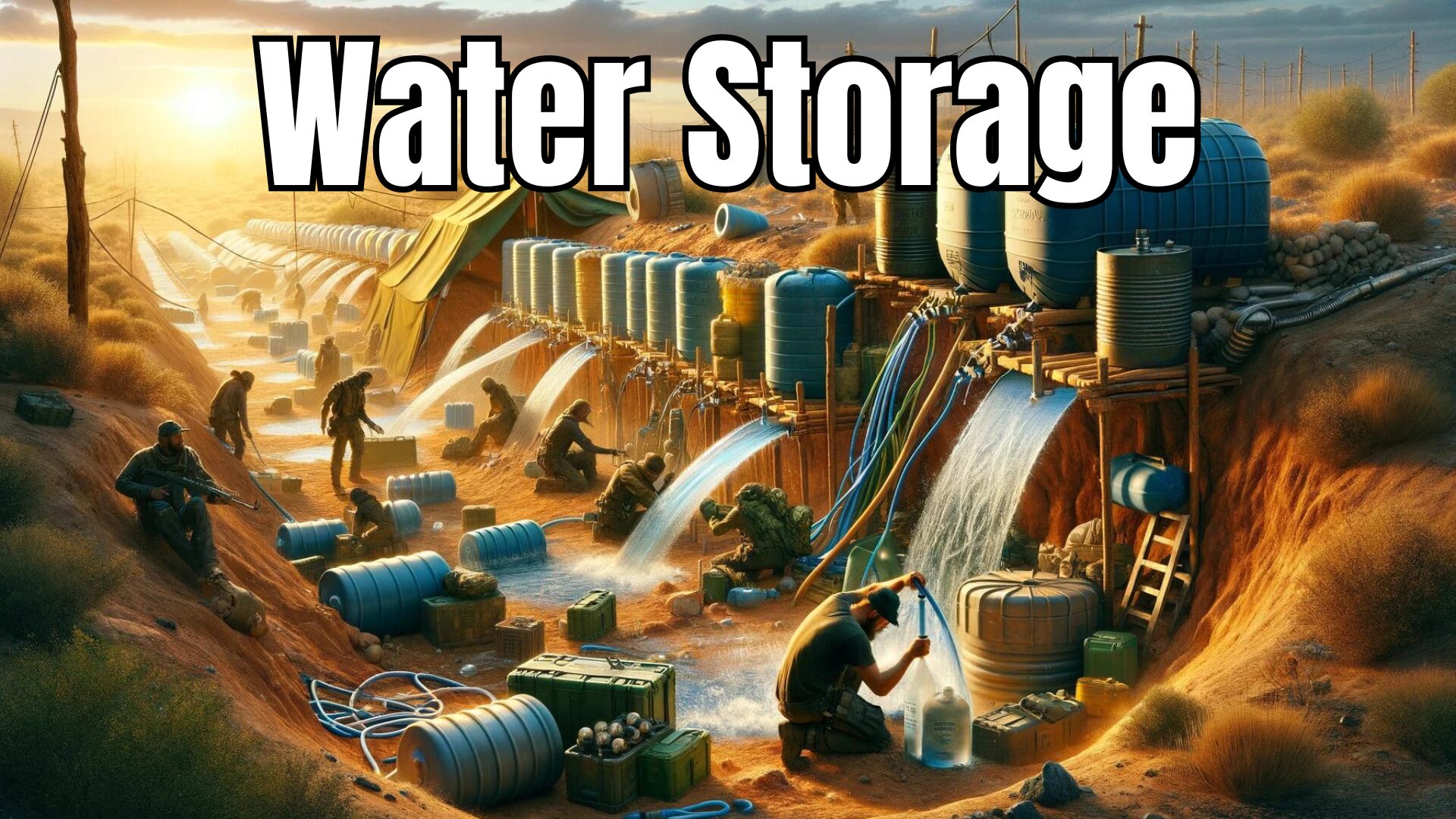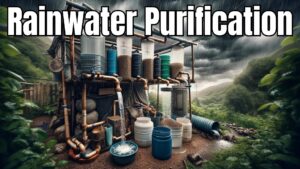When disaster strikes, your survival could hinge on your water supply.
Discover how to choose, store, and maintain water containers to ensure you’re prepared for any emergency.
Table of Contents
Key Takeaways
- Selecting Containers: Choose BPA-free, durable containers designed for long-term water storage. Portability and stackability are key for efficient storage and mobility.
- Storing Water: Clean and sanitize containers before use. Store water in a cool, dark place and replace it every six months to ensure safety.
- Using and Replenishing Water: Regularly check your water’s clarity and odor, treat it with purification chemicals if necessary, and be mindful of daily consumption to extend your supply.
Selecting the Right Water Storage Containers for Long-Term Use
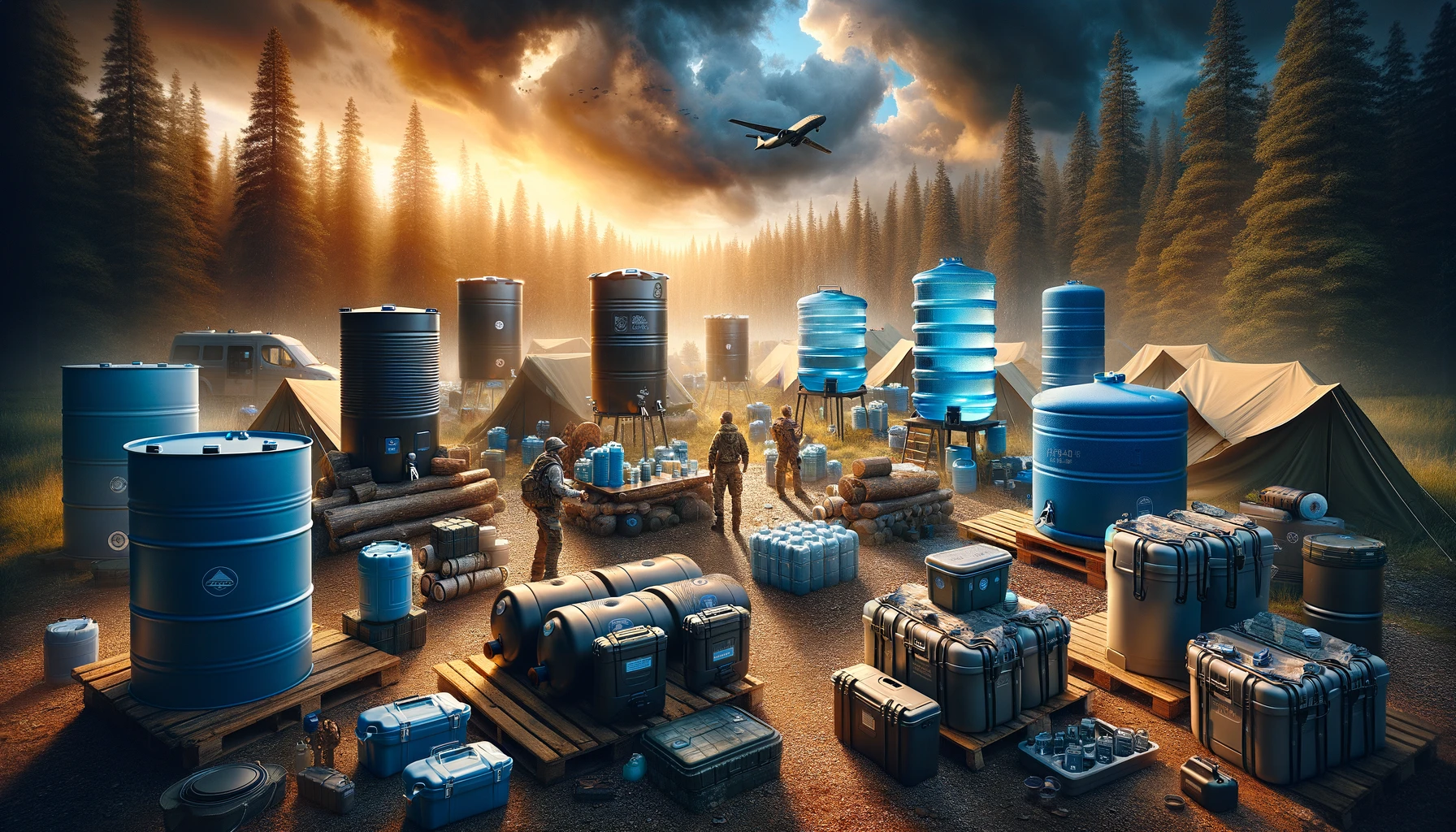
Innovative Water Storage Solutions for Every Need
When it comes to long-term water storage, selecting the right water storage containers is crucial to ensure you have an adequate supply of clean water during emergencies.
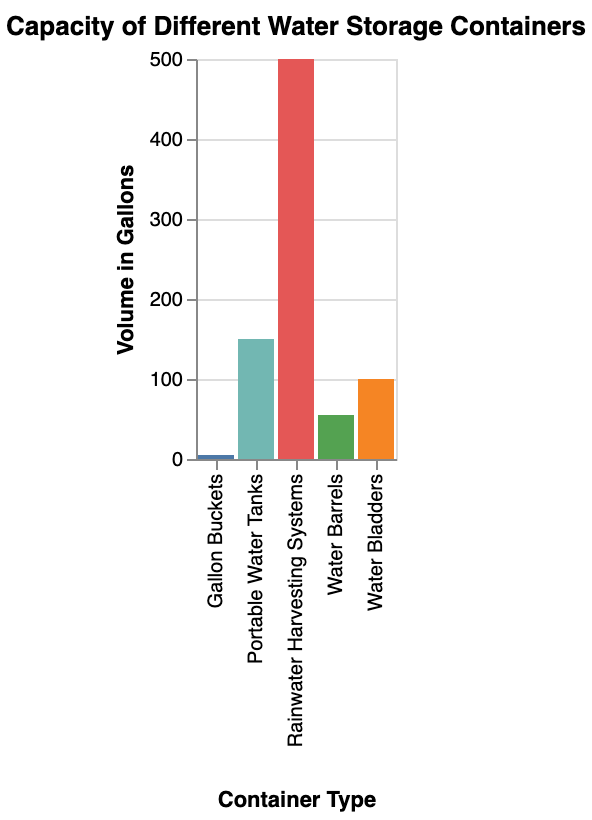
Here are some key points to consider:
- Size Matters: Choose containers that can hold the desired amount of water, whether it’s a gallon or more. Water barrels or gallon buckets are popular choices for storing larger quantities.
- Material Quality: Opt for food-grade containers to prevent the leaching of harmful chemicals into your water. Ensure the storage container is durable and can withstand long-term use.
- Dark and Cool: Select containers that are opaque to prevent light exposure, which can promote the growth of algae. Store water away from direct sunlight and in a cool environment to maintain water quality.
| Container Material | Durability | Food-Grade | Long-Term Storage |
|---|---|---|---|
| Plastic | Low – High | Varies | Depends on type |
| Stainless Steel | High | Yes | Excellent |
| Glass | High | Yes | Excellent |
| Aluminum | Mod – High | Yes | Good |
| Ceramic | High | Yes | Good |
| Copper | Mod – High | No | Fair |
| Polyethylene (HDPE) | High | Yes | Good |
Ensuring Your Emergency Water Supply is Sufficient
In planning for long-term water storage, it’s essential to calculate how much water you’ll need to sustain yourself and your family.
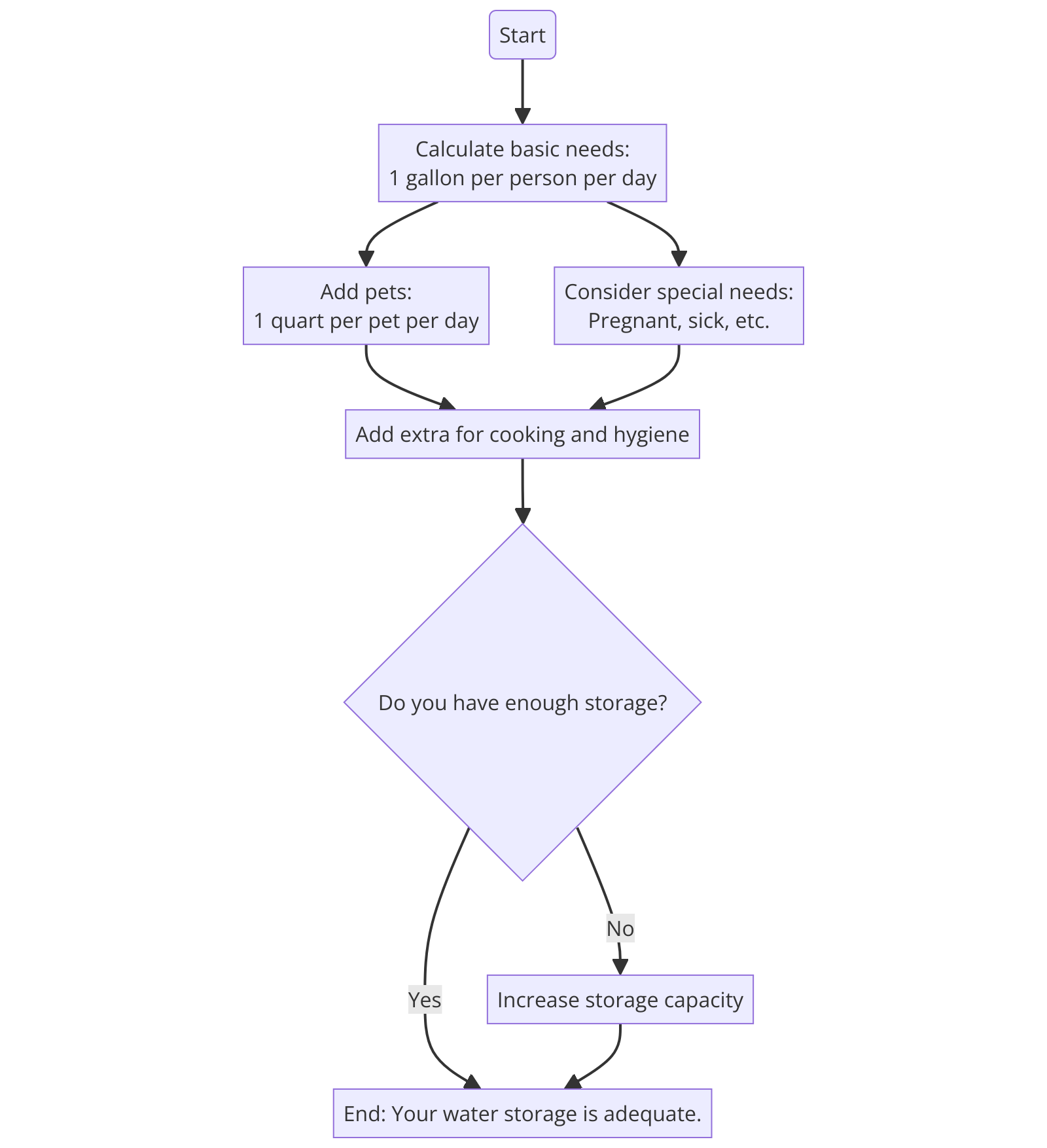
Some practical tips include:
- Consider Usage: Factor in drinking water, hygiene needs, cooking, and even pets when estimating your water supply requirements.
- Source Diversification: Don’t rely on just one water source. Supplement your stored water with available tap water or well water if possible.
- Regular Rotation: To ensure the freshness of your emergency water, rotate your stock periodically by using and replenishing the stored water.
- Water Treatment: Implement a water purification plan for your stored water to maintain its safety and potability.
How Much Water to Store for Emergency Preparedness
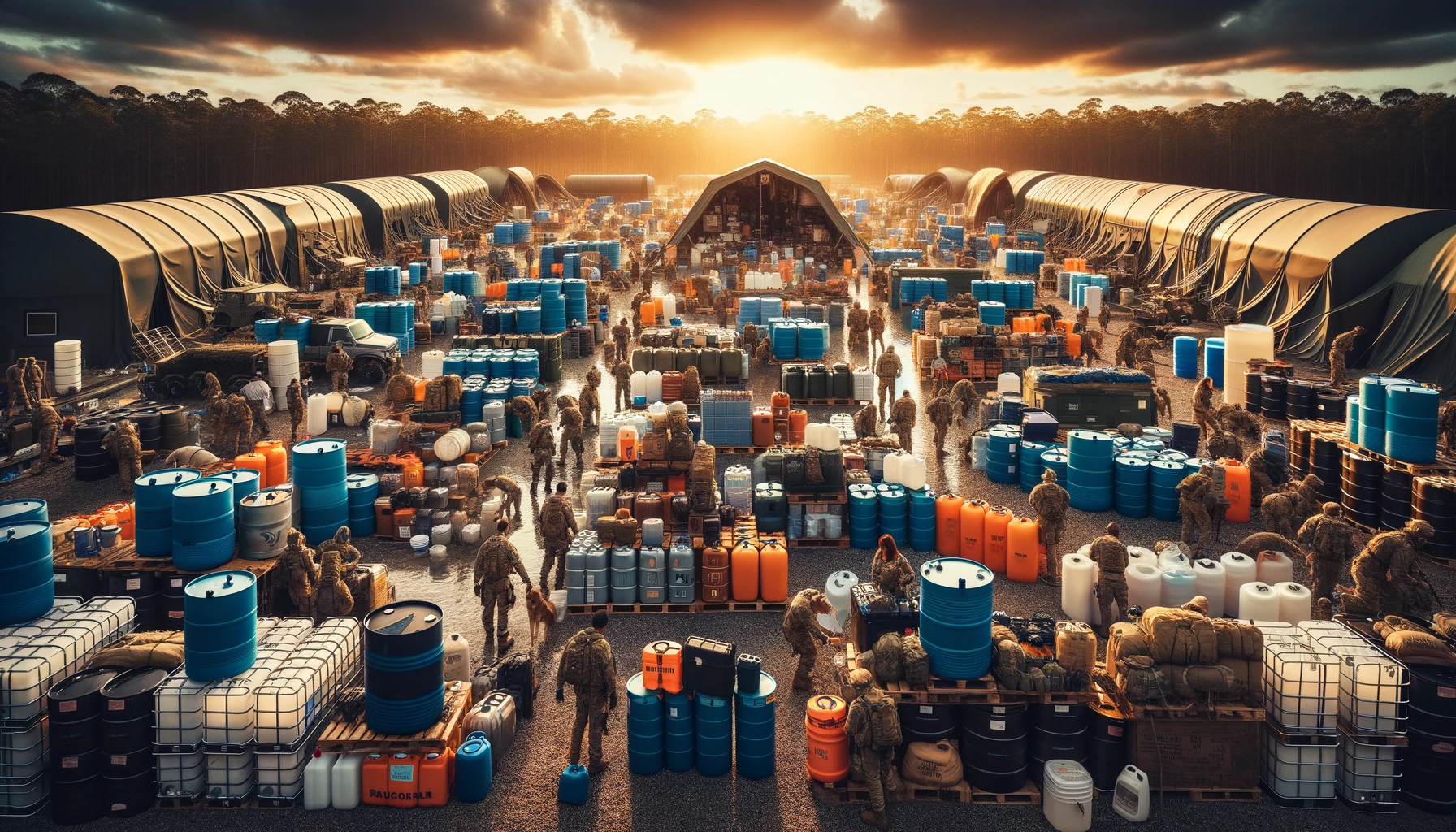
Calculating Your Water Needs
When it comes to emergency water storage, having enough water on hand is crucial.
A general guideline is to store one gallon of water per person per day for long-term water storage.
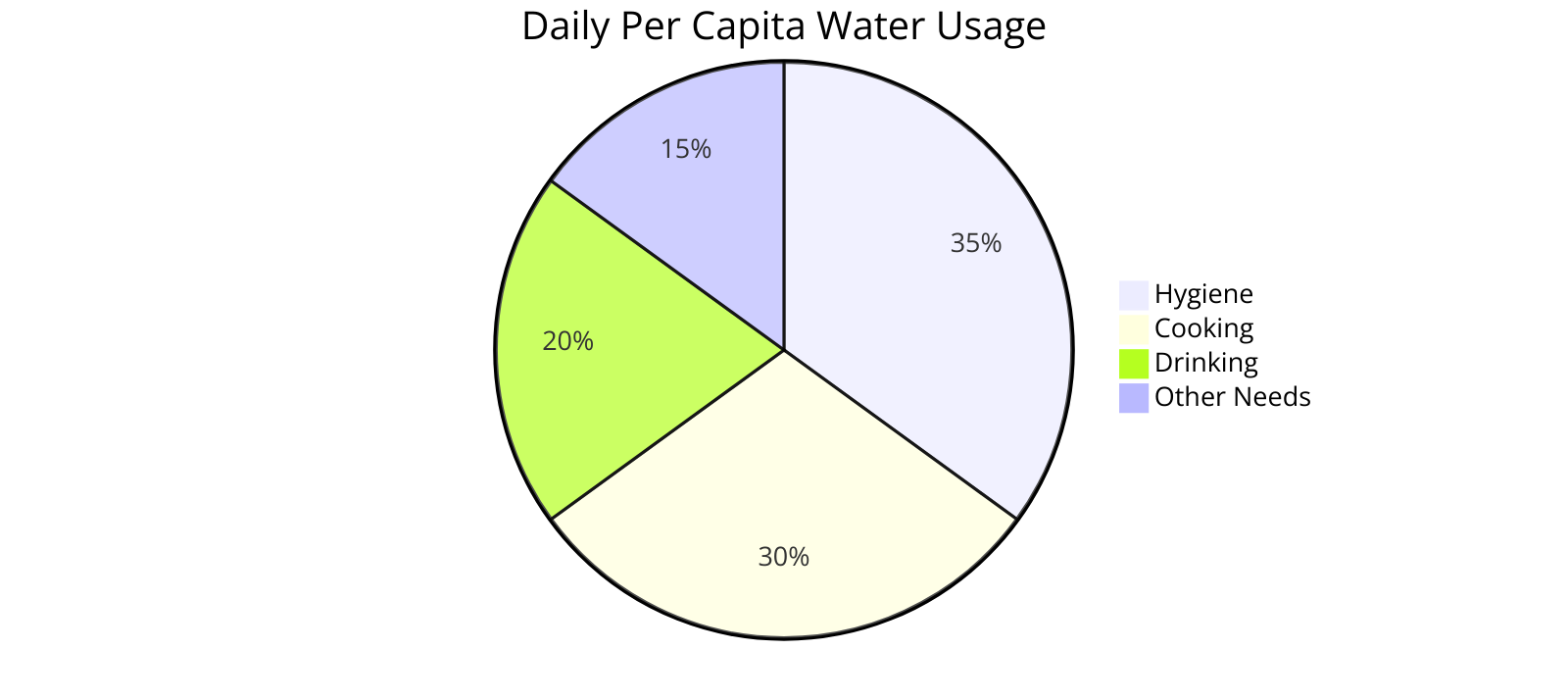
This water may be used for drinking, cooking, and hygiene.
Consider the number of people in your household when determining how much water to store.
| Emergency Scenario | Single Person | Couple | Family of 4 | Family of 6 |
|---|---|---|---|---|
| 3 days | 3 gallons | 6 gallons | 12 gallons | 18 gallons |
| 1 week | 7 gallons | 14 gallons | 28 gallons | 42 gallons |
| 2 weeks | 14 gallons | 28 gallons | 56 gallons | 84 gallons |
| 1 month | 30 gallons | 60 gallons | 120 gallons | 180 gallons |
Best Practices for Water Storage
To ensure you have enough water for emergencies, store as much water as possible in water storage containers that are specifically designed for long-term storage.
Rotating your water supply every six months is a good habit to maintain freshness.
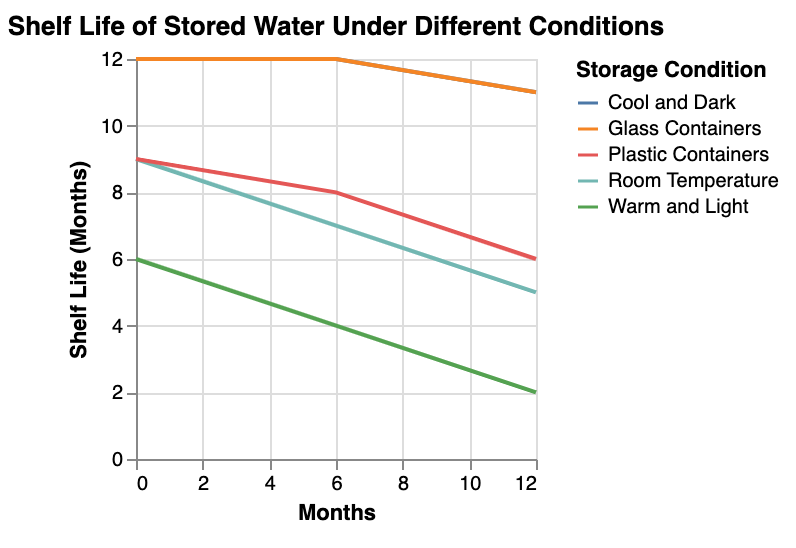
If access to clean water is limited, knowing how to boil water effectively can be a lifesaver.
Purifying Water for Long-Term Storage and Safety
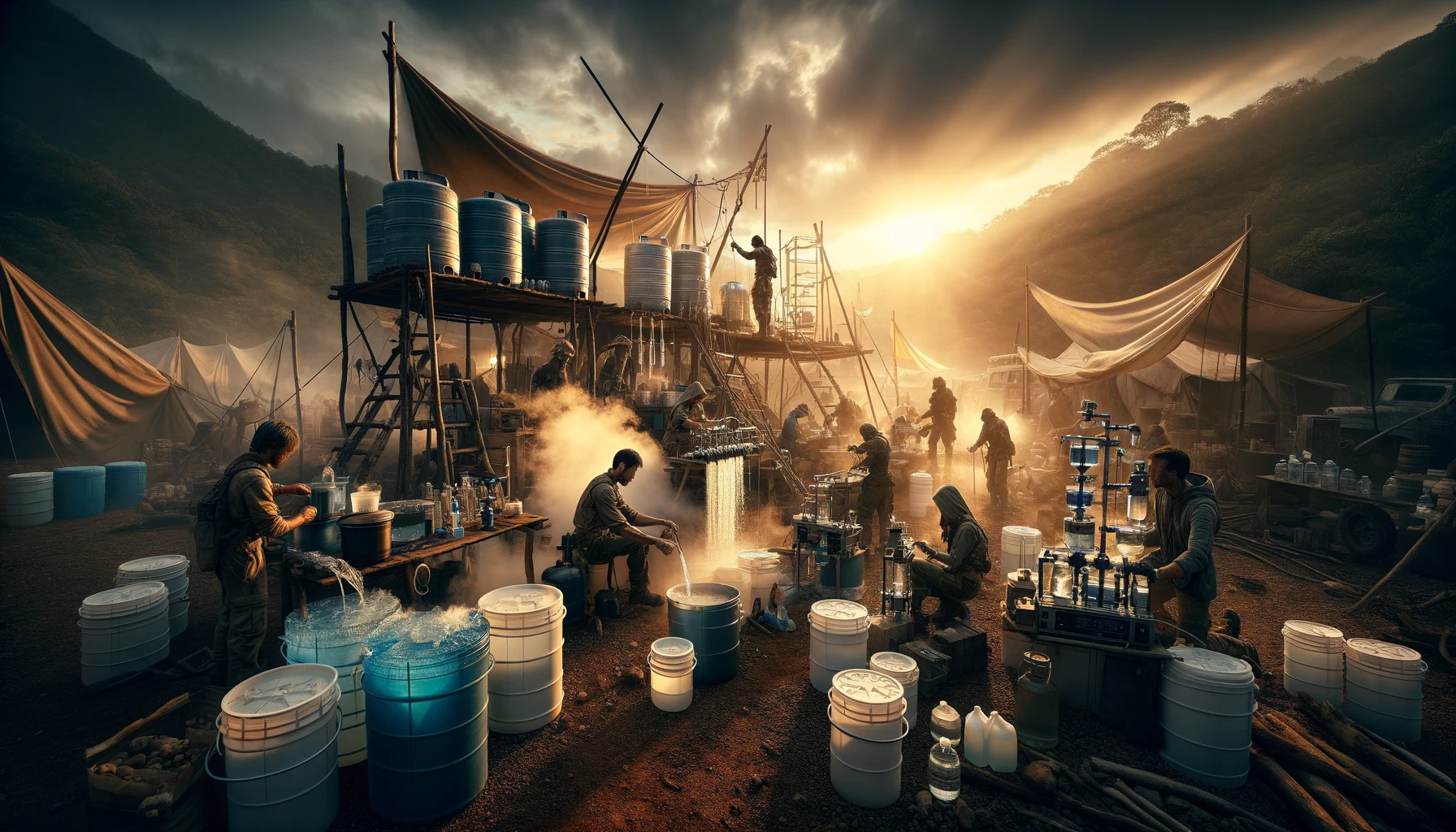
Sanitizing Your Water Storage Containers
When storing water for the long term, it’s crucial to ensure your containers are clean and free from any contaminants.
Start by thoroughly disinfecting water your containers before filling them up.
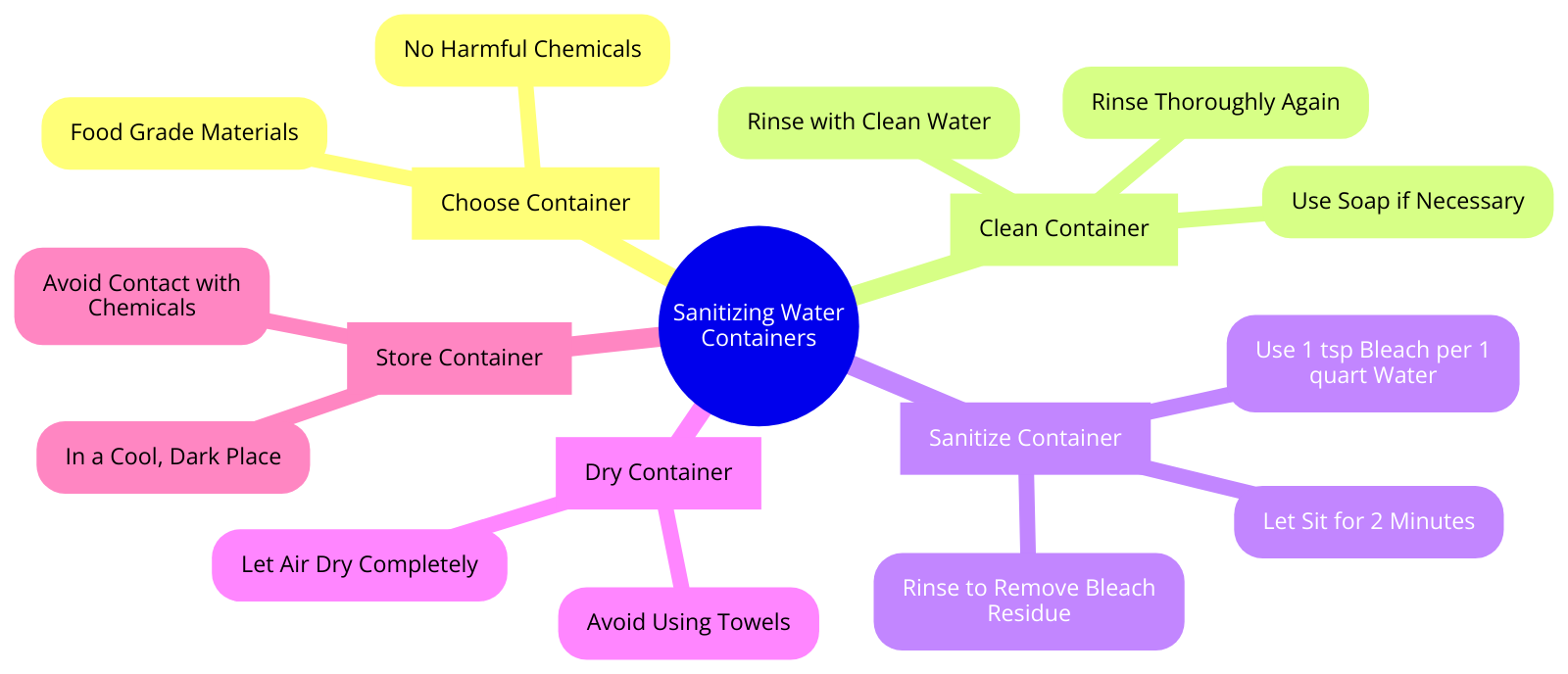
You can do this by using a water hose to rinse them out, then using a mixture of bleach and water to sanitize the interior.
Make sure to rinse the containers well after using bleach to avoid any residual tastes.
Utilizing Bottled Water for Long-Term Supply
If you choose to store in a cool bottled water for long-term water supply, inspect the expiration dates regularly and rotate your stock by using the older bottles first.
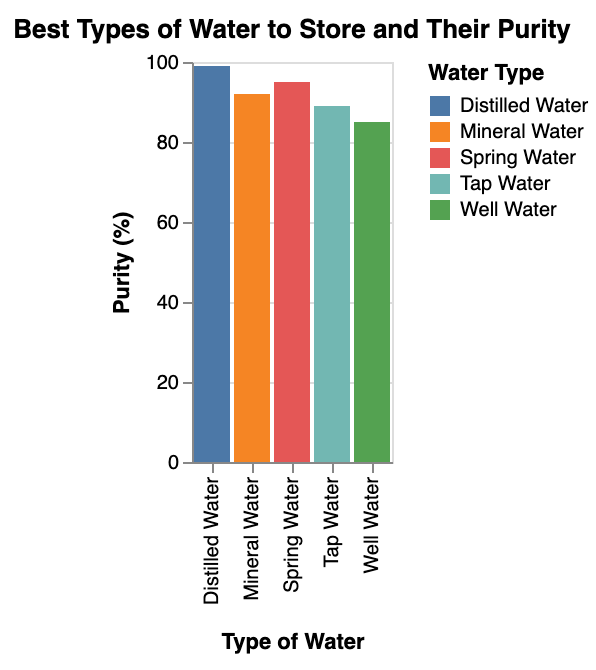
When treat the water pouring the water back and forth between containers to aerate it, this can help improve its taste.
Be mindful that contaminated water poses risks, so always check for signs of any leakage or damage in the bottles to prevent contamination.
| Brand | Expiration Date | Storage Conditions | Shelf Life |
|---|---|---|---|
| AquaPure | Varies | Store in a cool, dark place | 1-2 years |
| Oasis Springs | Varies | Keep away from direct sunlight | 2 years |
| Nature’s Best | Varies | Store in a cool environment | 1-2 years |
| Crystal Clear | Varies | Avoid exposure to heat | 1-2 years |
Maintaining Your Water Supply: Tips for Long-Term Storage
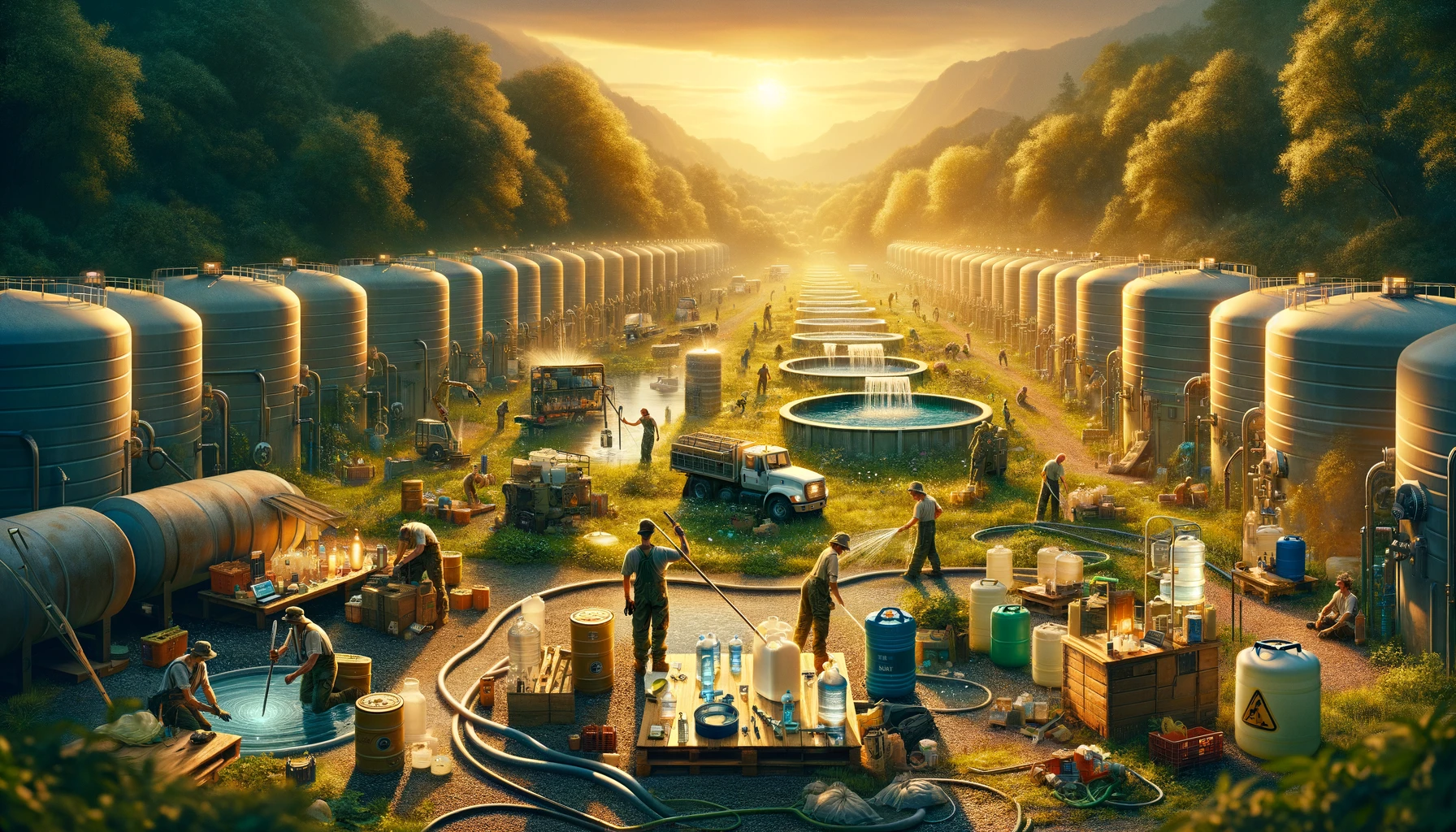
Keep Your Water Fresh and Safe
When storing water for emergencies, it’s essential to ensure its quality.
To maintain your water long-term, regularly purify water if it becomes cloudy or contaminated.
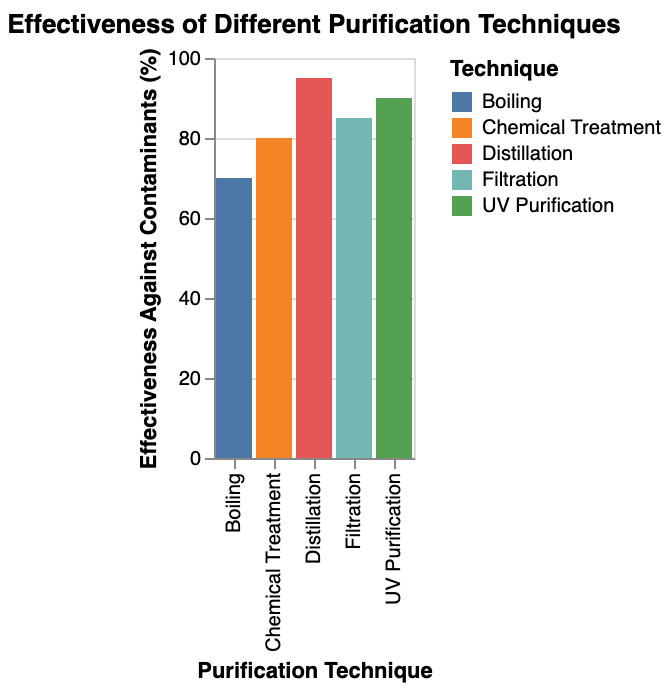
Treat your water with plastic water-safe solutions to prevent bacteria growth.
Store more water than the recommended amount of water per person per day to be prepared for any situation.
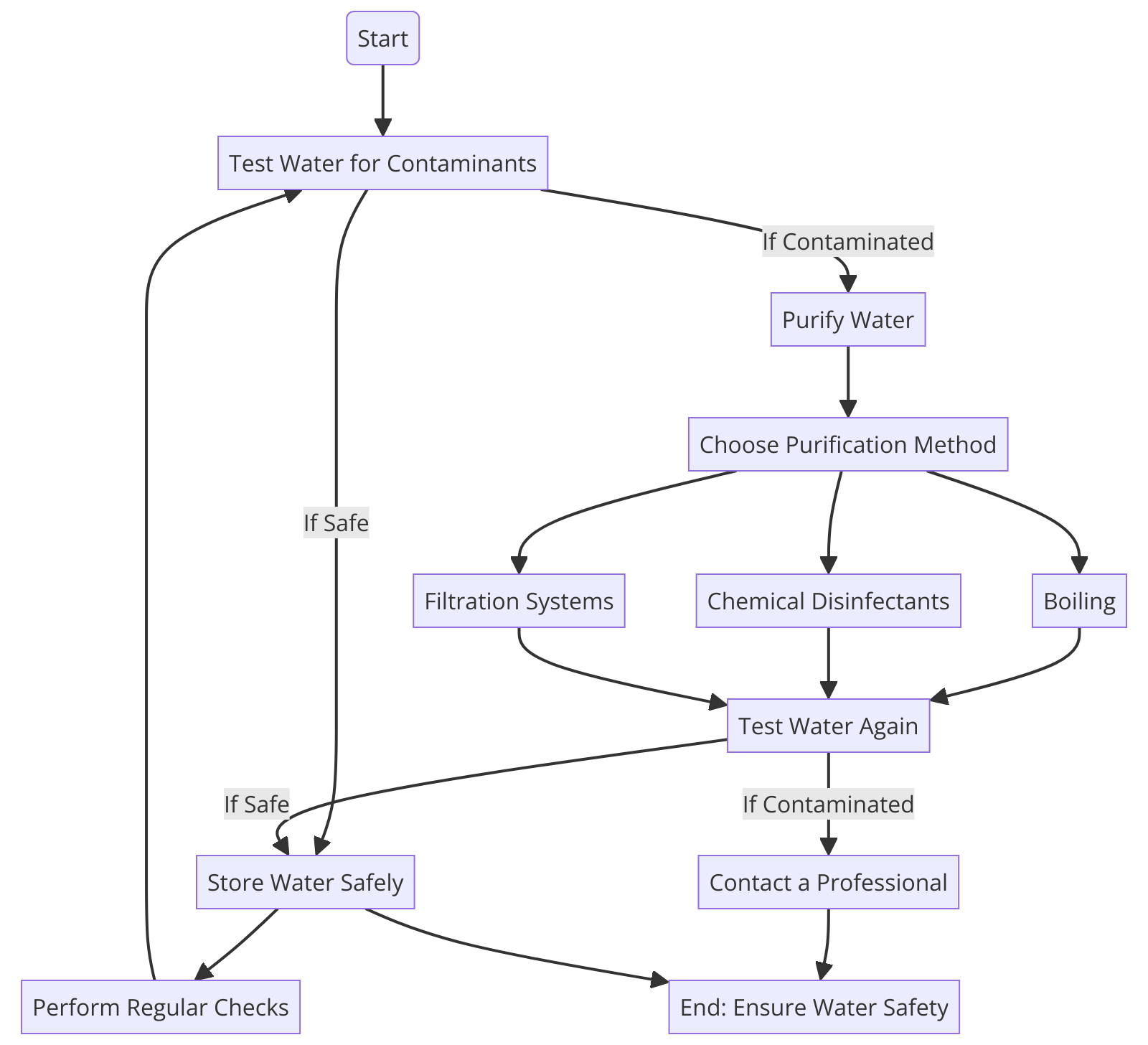
Properly Store Your Water for the Long Term
Be sure to use appropriate containers that can withstand long-term use and are safe for storing water to store over time.
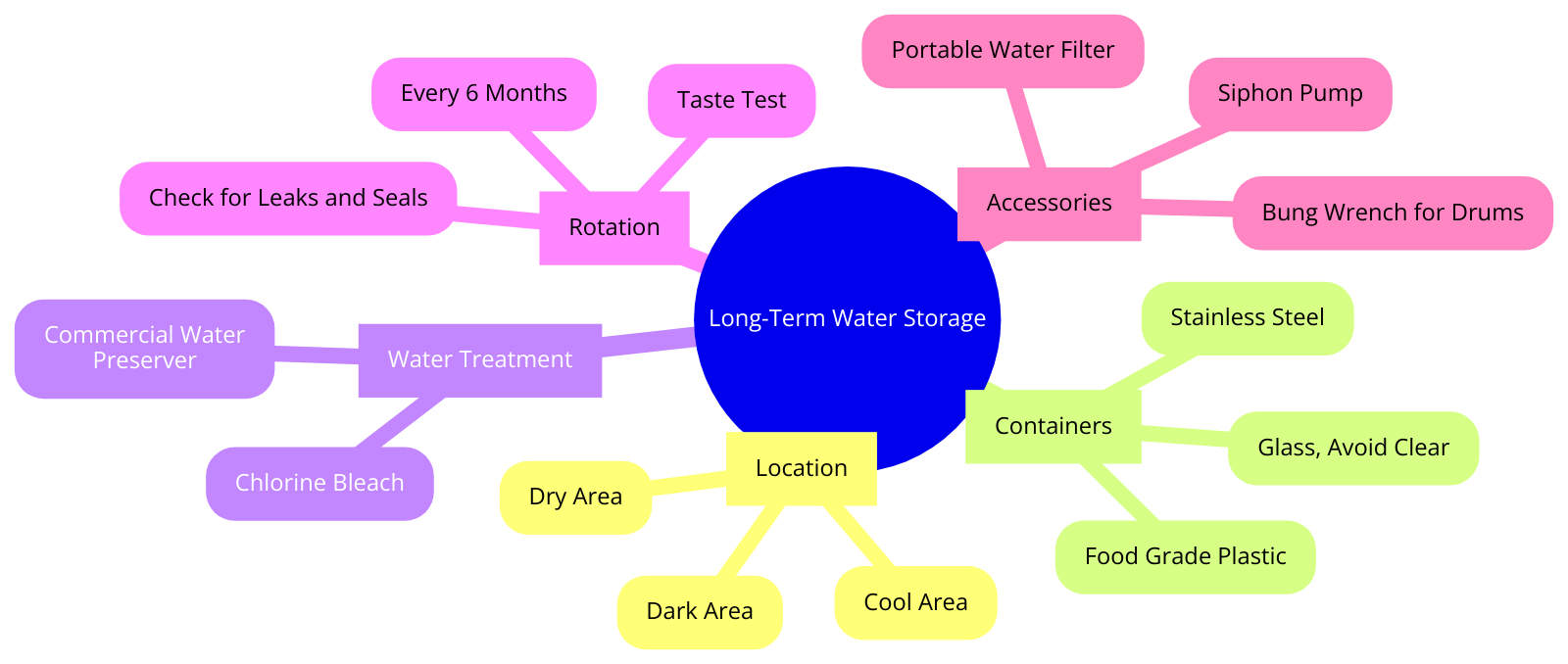
Store your water for the long-term in a cool, dark place away from direct sunlight to prevent algae growth and maintain freshness.
Innovative Water Storage Solutions for Every Need
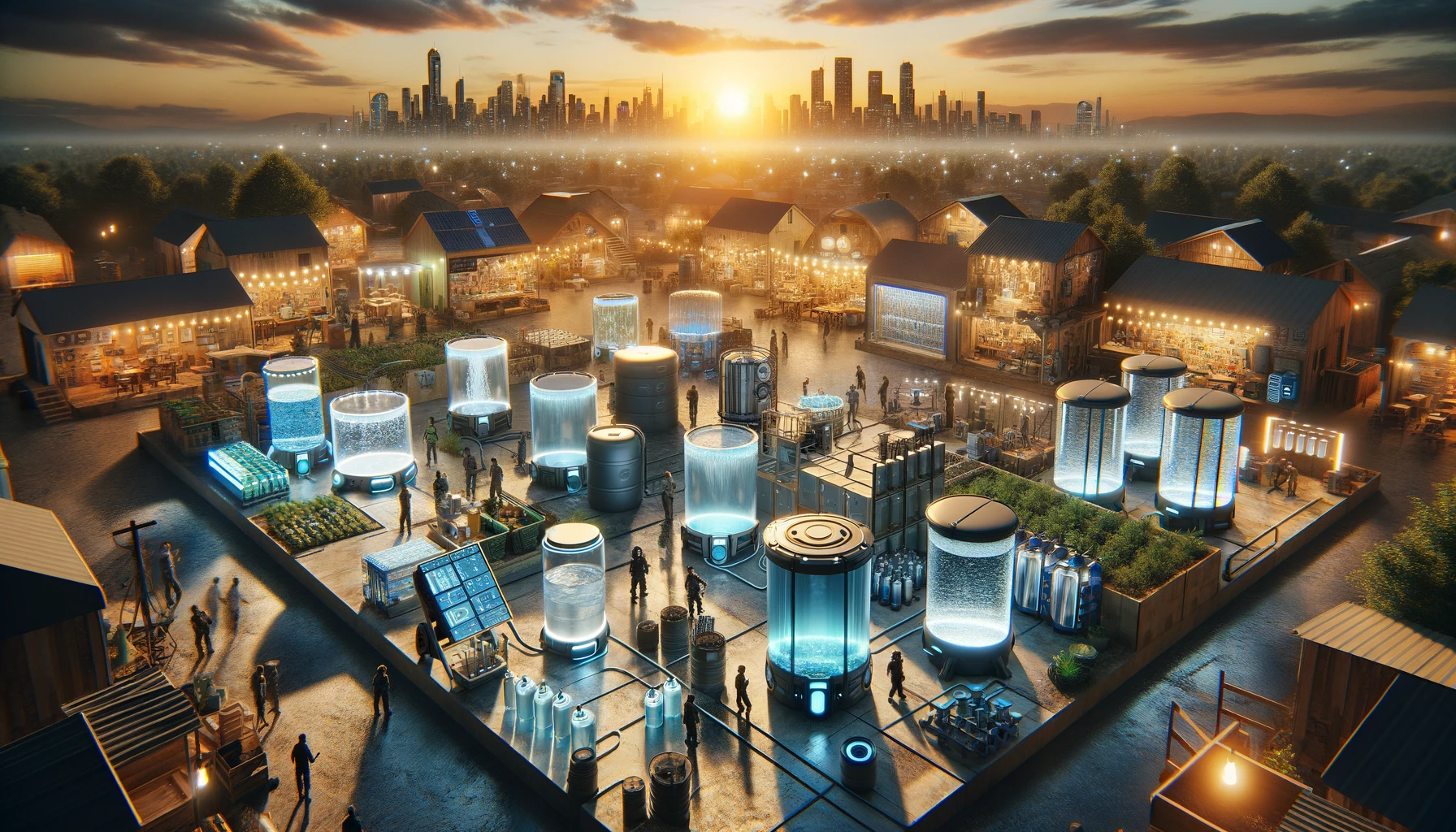
Repurposing Containers for Water Storage
When considering water storage options, think about repurposing containers you may already have at home for storing water.
| Container Type | Material | Size | Sealability | Durability | Suitability for Water Storage |
|---|---|---|---|---|---|
| Bleach Bottles | HDPE Plastic | Various | Good | Moderate | Good; ensure thorough cleaning |
| Soda Bottles | PET Plastic | Various | Good | Low to Moderate | Fair; may degrade over time |
| Food-Grade Buckets | HDPE Plastic | Various | Excellent | High | Excellent; ensure food-grade quality |
| Glass Jars | Glass | Various | Good | High | Excellent; inert material |
| Stainless Steel Tanks | Stainless Steel | Various | Excellent | High | Excellent; resistant to corrosion |
Ensure all containers are thoroughly cleaned before storing water to prevent contaminants or chemicals from leaching into the water.
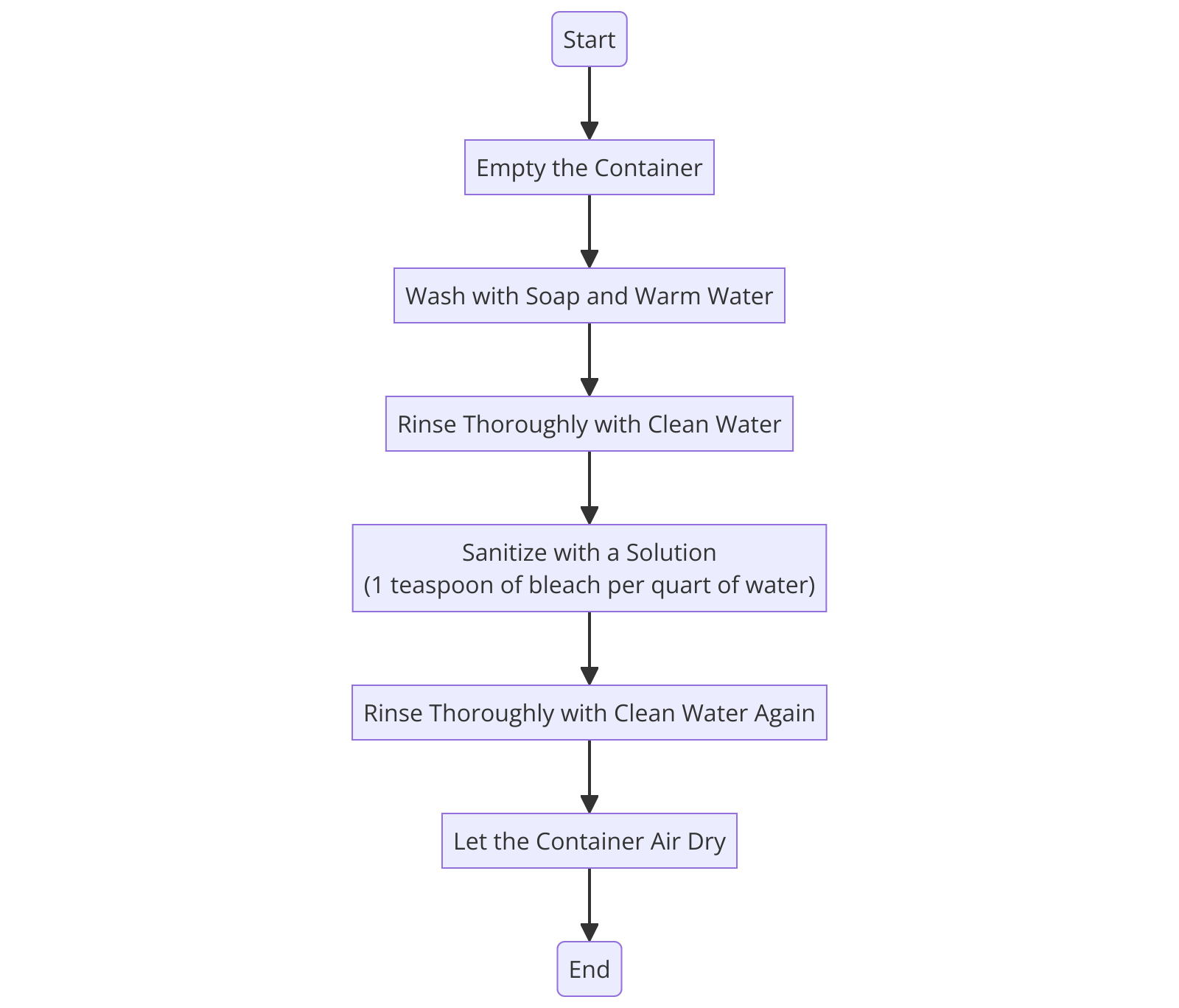
Utilizing Portable Water Storage Solutions
For those in need of more water or looking for a convenient solution, consider using a drinking water hose connected to a safe water source to store as much water as needed.
Additionally, in cases of emergency, store your water in food-grade containers or cases of water bottles.

Sufficient Water Supply
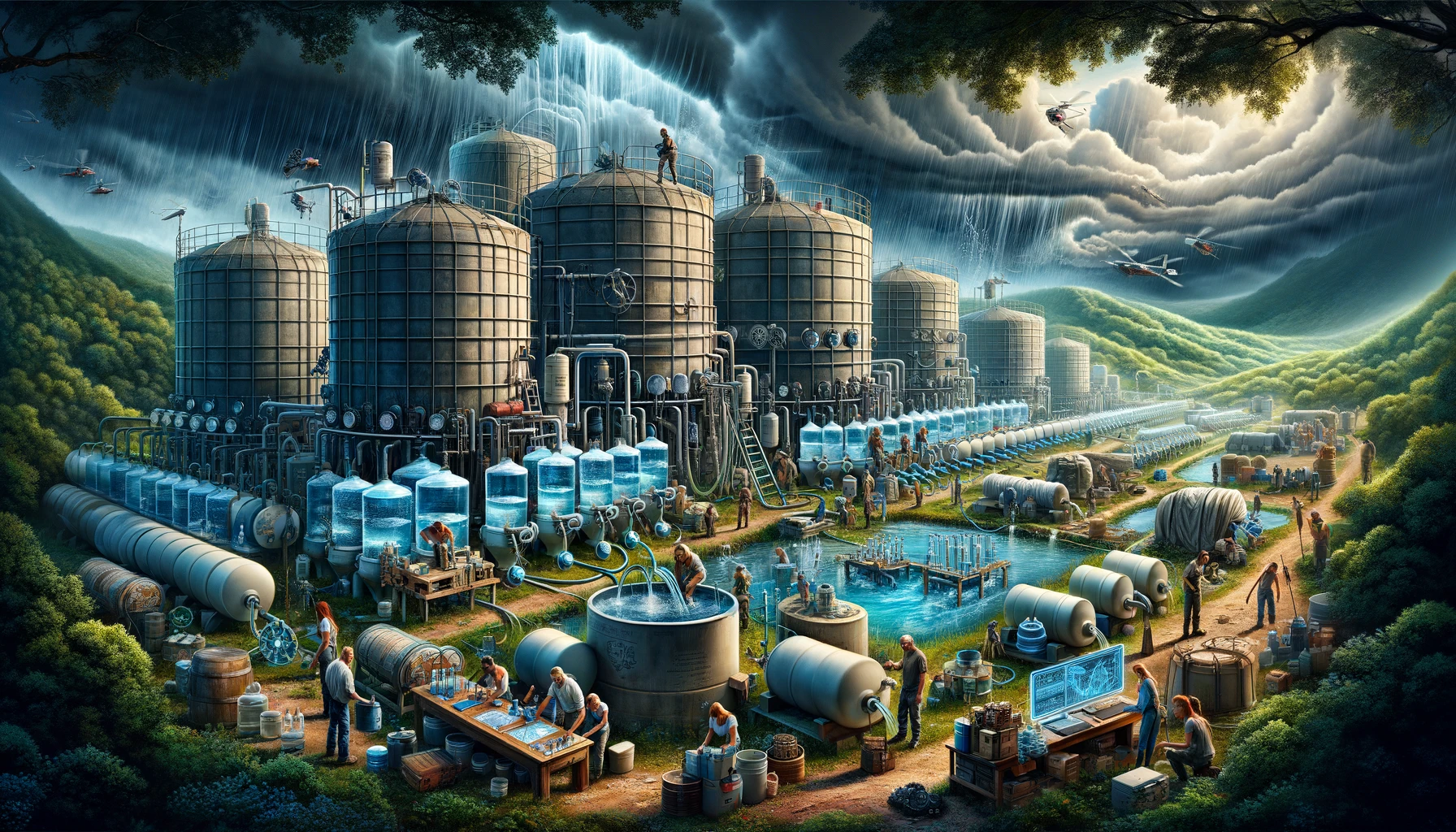
Calculate Your Water Needs
When it comes to storing water for the long term in preparation for emergencies, a good rule of thumb is to store at least one gallon of water per person per day.
| Duration | Recommended Water Storage |
|---|---|
| 3 days | 3 gallons |
| 1 week | 7 gallons |
| 2 weeks | 14 gallons |
| 1 month | 30 gallons |
For a family of four, this adds up to four gallons of water per day.
To ensure a sufficient emergency water supply, it is recommended to plan for at least a two-week supply of water.
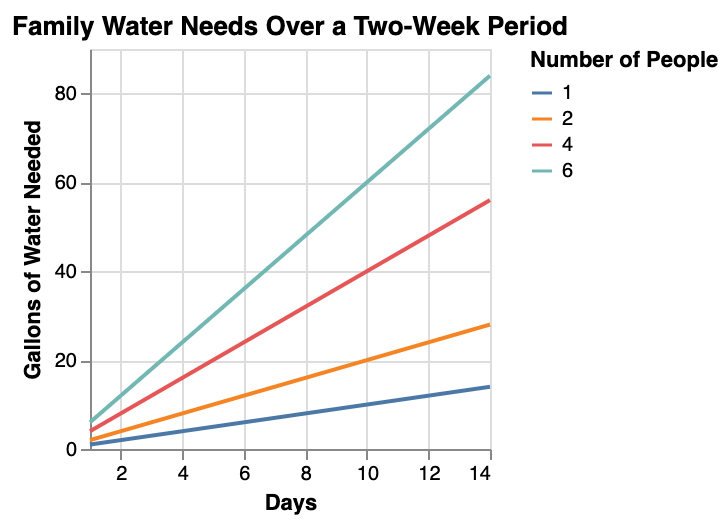
This implies storing at least 56 gallons of water for a family of four to last such a duration.
Treat Your Water for Long-Term Storage
To keep your stored water safe for consumption over an extended period, consider treating the water with chlorine before sealing the containers.
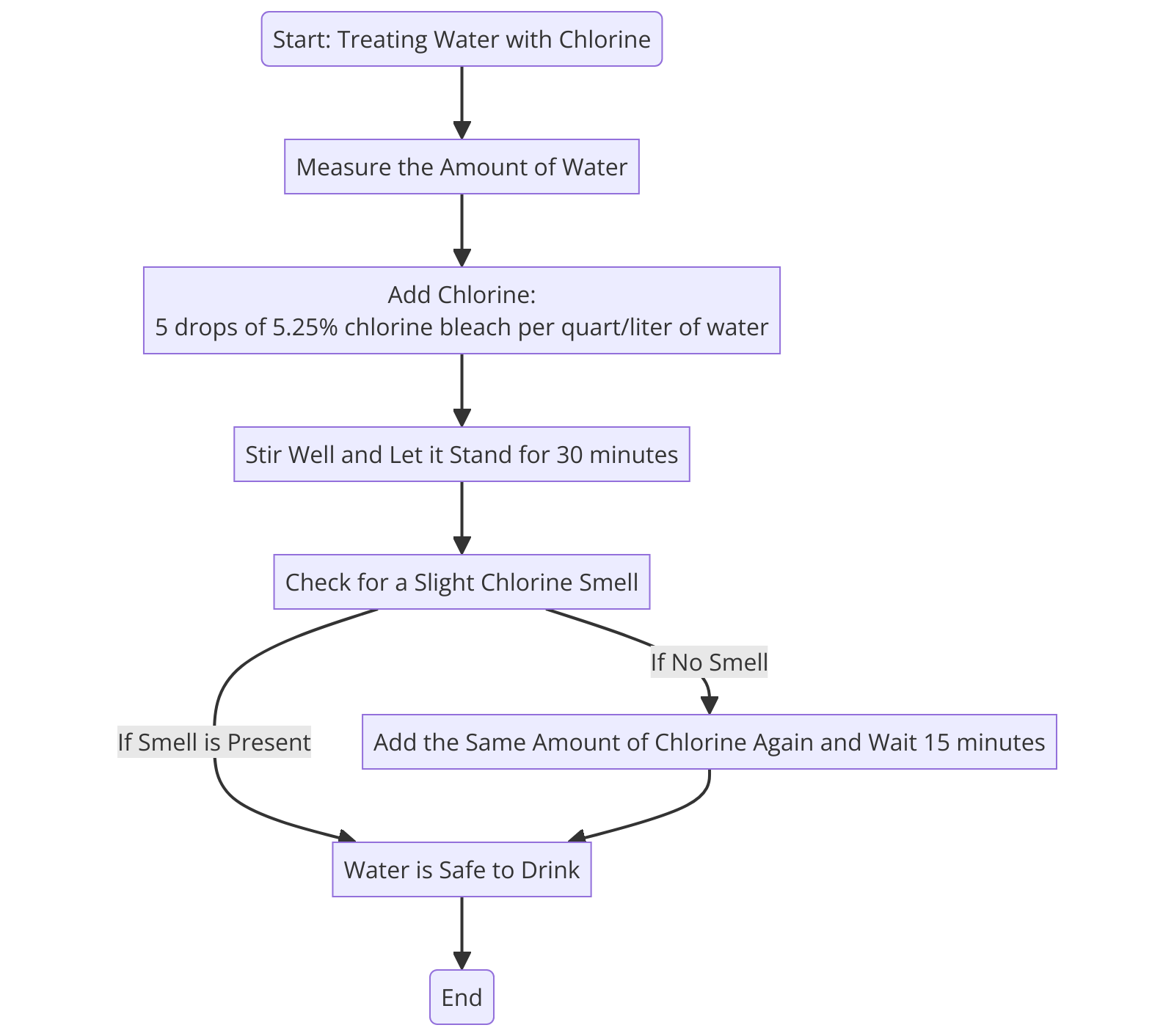
A good practice is to add chlorine in the water before sealing it tightly, then swish your water around to mix the chlorine thoroughly.
If you are relying on pool water as an option for long-term water storage, make sure to treat the water with chlorine to eliminate any potential contaminants.
Practical Tips for Using and Replenishing Your Stored Water
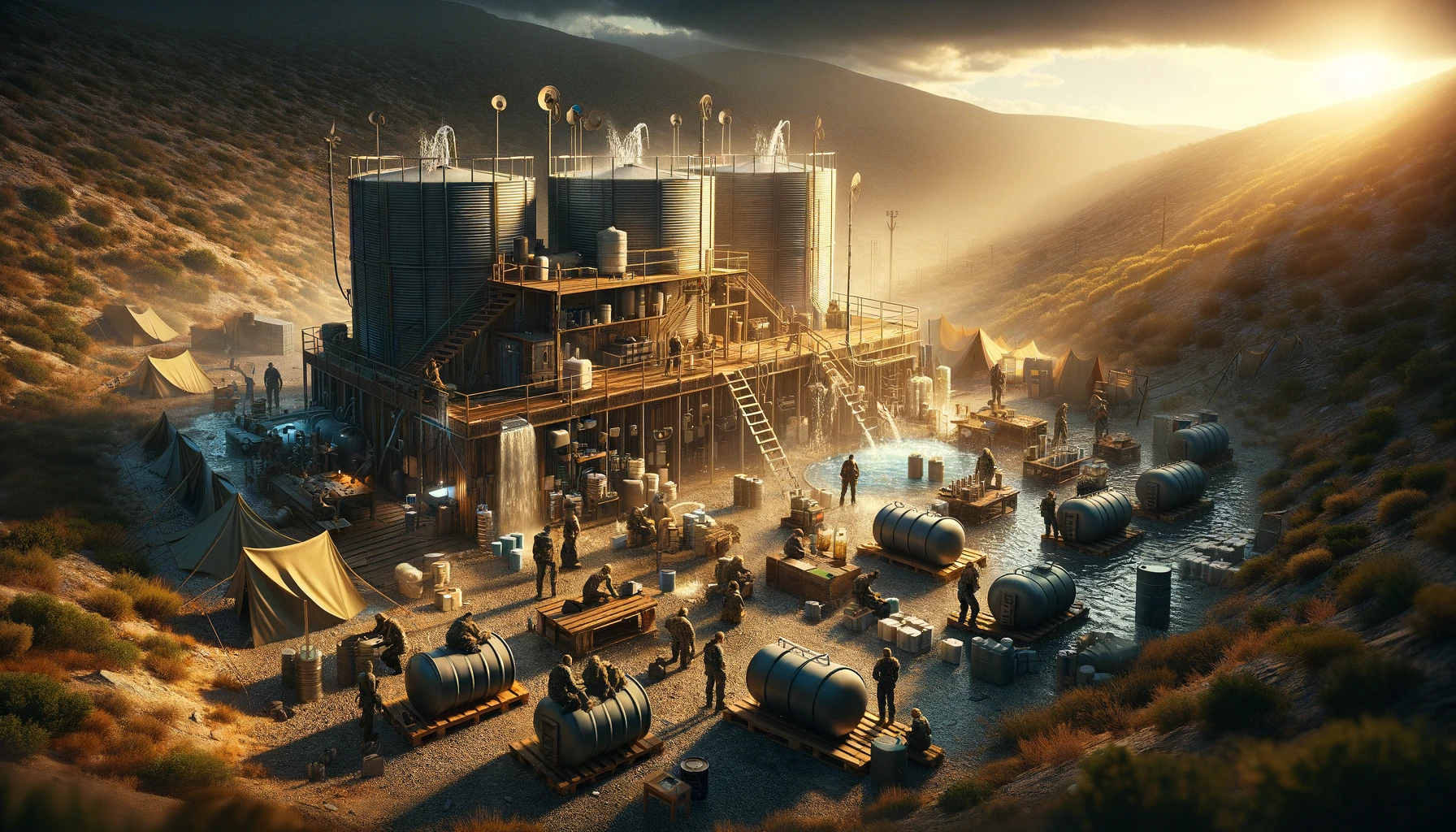
Utilizing Your Water Supply:
- Be mindful of the quantity of water used daily to ensure your supply lasts longer.
- Rotate the water stored in mylar water storage bags or containers every 6-12 months to maintain freshness and quality.

Replenishing Your Water:
- Regularly check that the water is clear and odorless before consumption.
- Add water treatment chemicals into the water if unsure about its purity status.
- Consume a balanced diet of water and food to prevent dehydration.
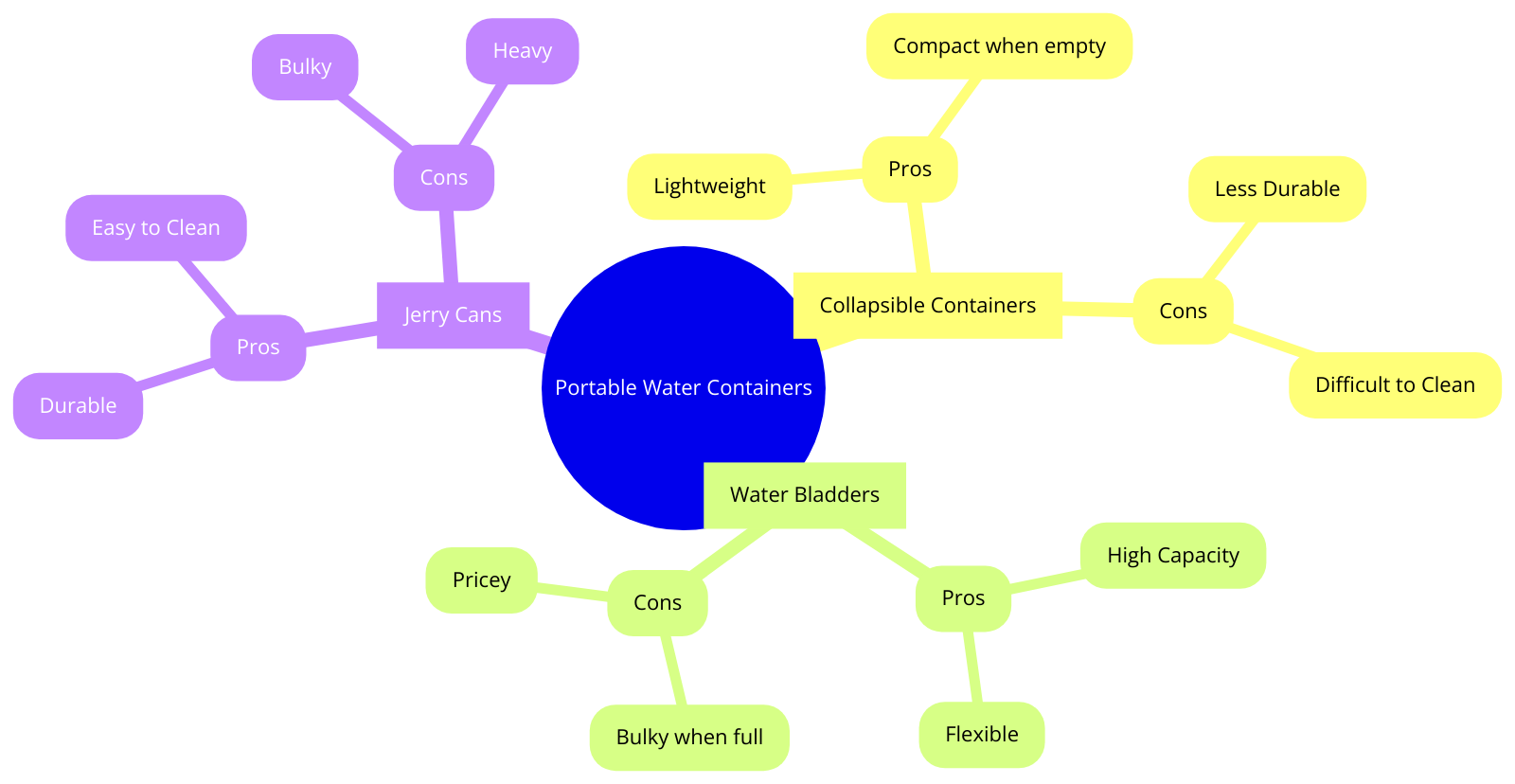
FAQ:
What is long-term water storage and why is it important?
Long-term water storage is the process of storing water for an extended period of time, typically for emergency situations or in areas where access to clean water is limited. It is important to have a sufficient amount of water stored to ensure you have a reliable supply in case of emergencies.
How much water should I store for long-term water storage?
The general guideline is to store at least one gallon of water per person per day for a minimum of three days. However, it is recommended to store more if possible, especially if you live in an area prone to natural disasters or water shortages.
What are the best containers to store water long term?
When storing water long term, it is best to use food-grade plastic containers specifically designed for water storage. These containers should be airtight, durable, and opaque to prevent the growth of algae and bacteria.
How should I treat water for storage?
It is advisable to treat your water with chlorine before storing it for long term. You can add bleach to the water to disinfect it, ensuring that it remains safe to drink even after an extended period of storage.
How often should I rotate the water in long-term storage?
It is recommended to rotate and replace the water in your long-term storage every six months to ensure its freshness and safety for consumption. This practice helps prevent contamination and ensures that you always have clean water available.
What should I do if the water in storage containers becomes cloudy?
If the water in your storage containers appears cloudy or has an unusual smell, it may be contaminated. In such cases, it is best to empty the containers, clean them thoroughly, and refill them with fresh, treated water to ensure its safety for long-term storage.
What are the key steps to properly store water long term?
The key steps to properly store water long term include using clean, airtight containers, treating the water with chlorine, storing it in a cool, dark place away from direct sunlight, and rotating the water every six months to maintain its freshness and safety.
More Resources:
- Bob Vila – Best Water Storage Container Options for Emergencies: Offers a variety of container options focusing on safety, portability, and capacity.
- Family Handyman – Best Emergency Water Storage Containers for Natural Disasters | 2024: Highlights containers with rugged construction and features like UV resistance and stackable designs.
- The Prepared – Best emergency water storage containers for your home: Provides detailed reviews based on practical durability and drop tests.
- CDC – Creating and Storing an Emergency Water Supply: Offers official guidelines for water storage, including tips for keeping water safe.
- World Water Reserve – Master List of the Best Water Storage Containers and Tanks: Explores options for both small-scale and large-capacity water storage solutions.


